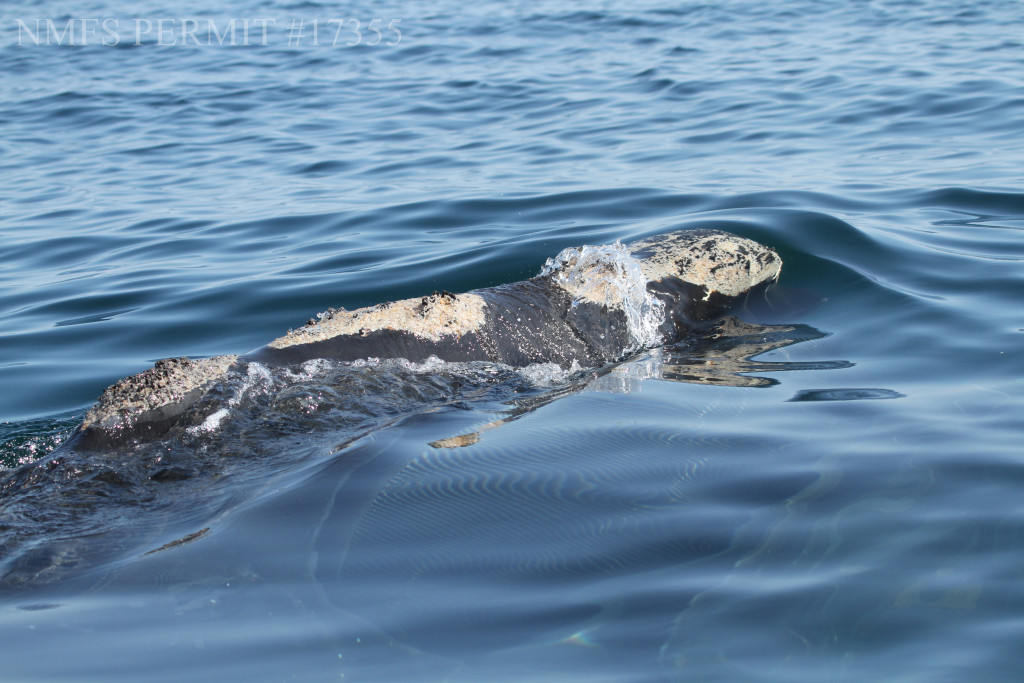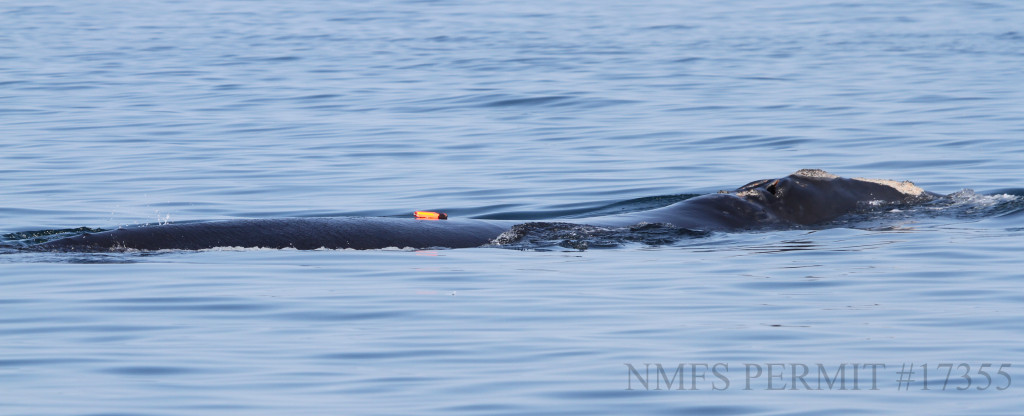Since we started our 2015 Cape Cod Bay field season, the right whales have been few and far between. They have been scattered about the Bay and in pretty low numbers. It also didn’t appear as if there was much food here and we didn’t see any of the high skim feeding that I have begun to associate with the Bay (see this previous blog post to see read more about skim feeding in right whales, and this post to see photos of a calf trying it out). But things are starting to look up it seems. The weather on Saturday was absolutely beautiful, and we often found ourselves in a sea state 0 or 1. Spectacular.
We searched around for more than half of the day to try and locate a mom/calf pair, but as it got later and later we made the decision to tag a single animal rather than go home with no data at all. Any data is precious and valuable, especially for a population this endangered! So we went to a small aggregation of feeding whales in the southern end of the Bay and picked one that was so preoccupied with subsurface skim feeding that it didn’t even seem to notice us sidle right up alongside it. It was an ideal situation, the perfect approach, and a solid tag attachment. In other words, it couldn’t have gone smoother.


As Alex so eloquently put it, tagging has two anxieties: getting the tag on, and getting it back! Once all the excitement of the deployment subsides, we then have to stay with the whale and track the tag.


This is always the worst part for me…will it stay on? Will we find it? Is the tag recording properly? Is the transmitter functioning alright? So many things to stress about, and in the case of our tagging on Saturday, 1 hour, 38 minutes, and 1 second to do it. Then it fell off, we got it back on board safely, I checked that it recorded, and all was well with the world. Until next time.